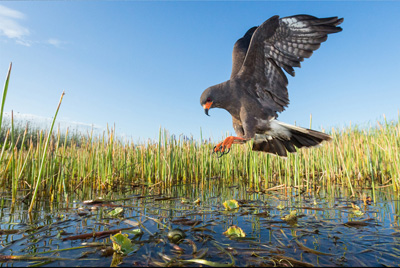
A new report produced by the National Audubon Society says nearly two-thirds of North American bird species are at severe risk of extinction due to climate change – a “bird emergency,” according to a prominent local bird expert.
The report, entitled “Survival by Degrees: 389 Bird Species on the Brink,” says about 64 percent of 604 species found in the U.S., Canada, and Mexico will shift the ranges where they fly, feed, and reproduce in response to warming of just over 1.5 degrees Celsius, and they may not survive.
“The unprecedented pace and magnitude of climate change make it an existential threat to birds, people, and the natural systems we depend on,” the report says.
Audubon compiled decades of observations collected from birders overlaid on the most recent models developed by climate scientists to project how each species’ range would change as the climate warms and human impacts increase. It also produced a ZIP code-based climate tool to show impacts on local areas – including 32963.
“It really means our future,” said Pelican Island Audubon Society president Dr. Richard Baker. “It’s not just birds that will be affected. It’s going to affect everything.”
The report says if warming can be held to no more than 1.5 degrees C higher than pre-Industrial Age levels, 76 percent of vulnerable bird species will be better off and nearly 150 species will no longer be vulnerable to extinction from climate change. But, it warns that a two-degree C rise by 2050 or three-degree rise by 2080 threaten to drive most to extinction.
According to the Audubon ZIP code tool, eight bird species in 32963 are highly vulnerable to being driven out of their range by climate change: the boat-tailed grackle; brown thrasher; eastern towhee; fish crow; gray kingbird; red-headed woodpecker; snail kite; and yellow-throated warbler.
Primary threats would come from urbanization, drought, sea level rise, heat and heavy rains. Eight other species are projected to be moderately vulnerable while 14 have low vulnerability and 70 are stable.
The model shows the fewest threats occurring north of the Wabasso Causeway, but increasing in more intensively-developed areas of Vero Beach to the south.
The new Audubon report paints a much more dire picture of the prospects of birds than its previous climate change study in 2014. That report, which used data only from the U.S. and Canada, found about half of bird species (314 out of 588) were vulnerable to extinction.
The good news, if any, from the Audubon research is that people still have time to act to save the birds – and themselves – from the effects of a warming planet. It suggests stabilizing carbon emissions by using fewer fossil fuels and planting more trees, which produce oxygen, absorb carbon dioxide from the atmosphere, and provide food and habitat for birds.
Pelican Island Audubon has launched “Trees for Life” – a drive to plant 100,000 native trees in Indian River County over the next decade. Right now, Baker says, the organization has 1,700 live oaks to give away.
“Trees are very important to us and the birds,” Baker said. “Live oaks are special to birds because they produce more insects than any other plant and birds are insect eaters.”
To learn more about Trees for Life, visit trees4lifeirc.org/ or call 772-567-3520.



